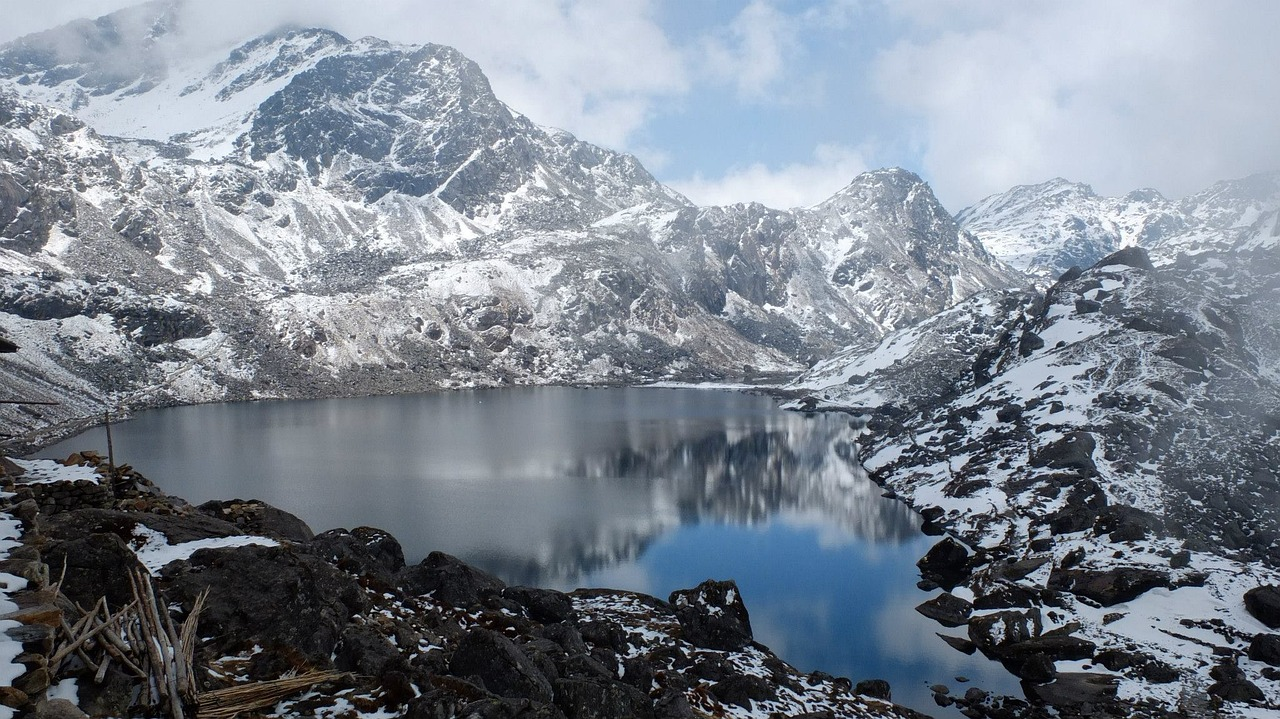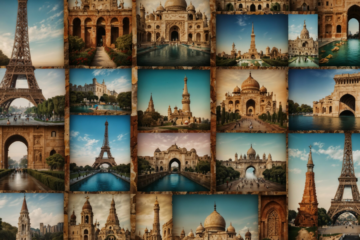Introduction
Winter trekking in Nepal offers a unique blend of challenges and breathtaking beauty. The snow-clad Himalayas, tranquil trails, and crisp mountain air create an unparalleled trekking experience. However, the cold season also brings its own set of difficulties that require careful preparation and consideration.
This article delves into the intricacies of winter trekking in Nepal, highlighting both the challenges and the awe-inspiring beauty that await intrepid adventurers.
Why Choose Winter Trekking in Nepal?
Winter trekking provides an entirely different perspective of Nepal’s landscapes. The serene environment, coupled with the pristine beauty of snow-covered mountains, makes for a surreal experience. Trekkers can enjoy the solitude and peace that come with fewer people on the trails. The quiet trails, covered in a blanket of snow, offer a unique tranquility that is hard to find during the busier trekking seasons.
The winter season also presents opportunities for unique activities such as ice climbing and snowshoeing. These activities add a thrilling dimension to the trekking experience, allowing adventurers to explore the mountains in ways they might not have considered before. Additionally, the clear winter skies often provide the best views of the Himalayan peaks, with the snow reflecting the sunlight and creating stunning visual contrasts.
Fewer Crowds
One of the significant advantages of winter trekking is the reduced number of trekkers. Popular routes that are usually crowded during the peak seasons of spring and autumn become quiet havens of solitude in winter, allowing for a more intimate connection with nature. This means less competition for teahouse accommodations and more opportunities to engage with local communities along the way.
The fewer crowds also mean that trekkers can enjoy more personalized attention from guides and teahouse staff. This can enhance the overall experience, as guides are able to share their knowledge and insights more freely, and trekkers can enjoy the hospitality of teahouse owners without the hustle and bustle of peak season.
Scenic Beauty
The winter season transforms Nepal’s mountainous regions into a wonderland of snow and ice. The views of the Himalayas are often clearer and more striking, with the added beauty of snow accentuating the majestic peaks and valleys. The pristine white landscapes, dotted with traditional villages and prayer flags, create a picturesque setting that is both peaceful and awe-inspiring.
Winter trekking also offers unique photographic opportunities. The snow-covered trails, frozen lakes, and icicles hanging from rocks provide stunning backdrops for capturing the beauty of the Himalayas. Whether it’s the early morning light casting a golden glow on the peaks or the crisp, clear night skies filled with stars, winter in Nepal is a photographer’s dream.
Popular Winter Trekking Routes
Everest Base Camp
The Everest Base Camp trek remains a favorite, even in winter. The trails are quieter, and the snow adds a layer of beauty to the already stunning scenery. Trekkers need to be prepared for extremely cold temperatures and possible snowfall. The journey to the base camp offers breathtaking views of the world’s highest peak, Mount Everest, along with other towering giants like Lhotse, Nuptse, and Ama Dablam.
Winter trekkers on the Everest Base Camp route can enjoy the peaceful ambiance of the Khumbu region. The lack of crowds means that trekkers have more opportunities to engage with the local Sherpa communities and learn about their way of life. The monasteries along the trail, such as Tengboche Monastery, are particularly serene in winter, offering a quiet place for reflection and connection with the spiritual side of the Himalayas.
Annapurna Circuit
The Annapurna Circuit offers diverse landscapes, from lush valleys to high mountain passes. Winter trekkers can enjoy clear views and a peaceful journey, though some high passes may be closed due to heavy snow. The circuit takes trekkers through a variety of environments, from subtropical forests to alpine terrain, providing a rich and varied trekking experience.
One of the highlights of the Annapurna Circuit in winter is the journey to Thorong La Pass, one of the highest trekking passes in the world. While the pass can be challenging in winter, the reward is unparalleled views of the Annapurna and Dhaulagiri ranges, along with the satisfaction of overcoming a significant trekking milestone. Additionally, the circuit passes through charming villages such as Manang and Muktinath, where trekkers can experience the local culture and hospitality.
Langtang Valley
Langtang Valley is a relatively short trek that is accessible in winter. The valley is known for its beautiful landscapes, rich cultural experiences, and stunning mountain views. Winter conditions can make the trek more challenging but equally rewarding. The trek takes trekkers through the Langtang National Park, home to a diverse range of flora and fauna, including the elusive red panda.
The Langtang Valley trek offers a combination of natural beauty and cultural immersion. Trekkers can explore traditional Tamang and Tibetan villages, visit ancient monasteries, and enjoy the warm hospitality of the locals. The snow-covered trails and frozen rivers add to the valley’s charm, making it a perfect winter trekking destination for those looking for a shorter, yet equally captivating trek.
Preparing for Winter Trekking
Essential Gear
Winter trekking requires specialized gear to handle the cold and snow. Essential items include:
- Layered Clothing: To manage body heat and stay warm. This includes a moisture-wicking base layer, an insulating layer such as a fleece or down jacket, and a waterproof outer layer to protect against wind and snow.
- Insulated Boots: To keep feet dry and warm. Waterproof, insulated boots with good traction are crucial for navigating icy and snowy trails.
- Sleeping Bags: Rated for sub-zero temperatures. A high-quality sleeping bag ensures a warm and comfortable sleep, even in freezing conditions.
- Trekking Poles: For stability on icy trails. Poles with snow baskets can provide additional support and help maintain balance.
Other essential gear includes thermal gloves, hats, and scarves to protect extremities from the cold, as well as sunglasses and sunscreen to protect against the intense glare from the snow. It’s also important to carry a reliable headlamp with extra batteries, as winter days are shorter and nights longer.
Physical Conditioning
Physical fitness is crucial for winter trekking. Trekkers should focus on building cardiovascular endurance, strength, and flexibility. Training hikes with a loaded backpack can help simulate the conditions of a winter trek. Regular exercise routines that include running, cycling, and strength training can build the necessary stamina and strength required for the rigors of winter trekking.
Flexibility exercises, such as yoga or stretching, can help prevent injuries and improve overall mobility. It’s also beneficial to practice hiking in cold weather conditions, gradually increasing the intensity and duration to help the body acclimate to the challenges of winter trekking.
Pre-Trek Training
Pre-trek training should include altitude acclimatization, especially for routes that reach high elevations. Practicing hikes in cold weather conditions can also help the body adjust to the rigors of winter trekking. Spending time at higher altitudes, if possible, or using altitude simulation masks during workouts can provide some benefits.
Additionally, it’s important to familiarize oneself with the use of trekking gear, such as crampons and ice axes, if the trek involves technical sections. Taking a winter trekking course or participating in guided training sessions can provide valuable skills and confidence for tackling the challenges of winter trekking.
Challenges of Winter Trekking
Harsh Weather Conditions
Winter trekking in Nepal means dealing with cold temperatures, strong winds, and potential snowfall. Weather conditions can change rapidly, making it essential to be prepared for all possibilities. Trekkers must be ready to face sub-zero temperatures, especially at higher altitudes, where wind chill can make it feel even colder.
Blizzards and heavy snowfall can obscure trails and create hazardous conditions. Trekkers need to have a solid understanding of weather patterns and be able to interpret forecasts to make informed decisions about their trek. It’s also important to have contingency plans in place and be prepared to alter the itinerary if necessary.
Difficult Terrain
Snow and ice can make the trails slippery and challenging to navigate. Trekkers need to be cautious and use appropriate gear to ensure safety. Steep ascents and descents can be particularly tricky in winter conditions. Using trekking poles, crampons, and gaiters can provide additional stability and traction on icy or snowy trails.
Avalanche risk is another concern in winter. Trekkers should be aware of avalanche-prone areas and know how to recognize warning signs. Guides with local knowledge are invaluable in navigating these hazards and ensuring safe passage through challenging terrain.
Limited Facilities
Many teahouses and lodges may be closed or offer limited services during the winter months. It’s important to plan accommodations in advance and be prepared for more basic facilities. Trekkers should carry sufficient food, fuel, and emergency supplies, as resupply points may be scarce.
Water sources may also be frozen, requiring trekkers to melt snow for drinking water. This process can be time-consuming and requires additional fuel, so it’s important to plan accordingly. Being self-sufficient and prepared for limited facilities is crucial for a successful winter trek.
Beauty of Winter Landscapes
Snow-Covered Peaks
The sight of the Himalayas covered in snow is a breathtaking experience. The peaks look even more majestic, and the landscapes appear untouched and pristine. The winter sun reflecting off the snow creates dazzling displays of light, making the mountains appear even more magnificent.
The contrast between the white snow and the deep blue sky provides stunning photographic opportunities. Trekkers can witness some of the most iconic Himalayan peaks, such as Everest, Annapurna, and Manaslu, in their full winter glory. The serene and silent beauty of the snow-covered landscapes offers a sense of peace and wonder that is unique to winter trekking.
Frozen Lakes
High-altitude lakes often freeze over in winter, creating stunning natural ice sculptures. These frozen lakes offer unique photo opportunities and a chance to see the landscape in a different light. The stillness of the frozen water against the backdrop of snow-clad peaks and clear blue skies creates a surreal and tranquil environment.
One of the most famous frozen lakes in Nepal is Gosaikunda, located in the Langtang region. In winter, the lake is covered with a thick layer of ice, reflecting the surrounding mountains and sky. Trekkers visiting this sacred lake during winter can enjoy a peaceful and almost mystical atmosphere, free from the crowds that usually visit during the warmer months.
Quiet Trails
The peace and quiet of winter trails are a stark contrast to the bustling paths of peak season. The solitude allows trekkers to connect deeply with nature and enjoy the tranquility of the mountains. The only sounds may be the crunch of snow underfoot, the distant call of a bird, or the gentle whisper of the wind.
This quietness also provides an opportunity for introspection and meditation. Trekkers can take their time, move at their own pace, and fully immerse themselves in the serene beauty of the Himalayas. The lack of other trekkers means more personal space and the ability to enjoy the landscape in a more intimate and reflective manner.
Wildlife Encounters in Winter
Rare Species
Winter can be an excellent time for wildlife spotting. Some animals, like the elusive snow leopard, are more active in winter. Guides can help identify and explain the habits of these rare species. The snow leopard, known as the “ghost of the mountains,” is one of the most sought-after sightings for wildlife enthusiasts. Winter trekking routes in regions like the Annapurna Conservation Area and Langtang National Park offer the best chances of encountering this magnificent predator.
Other wildlife, such as the Himalayan tahr, blue sheep, and various species of birds, are also more visible against the snowy backdrop. Guides with local knowledge can point out these animals and share insights about their behavior and adaptations to the harsh winter environment.
Tracking Animal Footprints
Snow-covered trails reveal the footprints of animals, providing clues about their movements and behaviors. Tracking these footprints can be a fascinating aspect of winter trekking. Trekkers can learn to identify different types of animal tracks and follow them to gain a deeper understanding of the local wildlife.
Footprints in the snow can tell stories about the nocturnal activities of various animals, their hunting patterns, and their interactions with the environment. This tracking activity not only adds an element of adventure but also enhances the overall trekking experience by connecting trekkers more closely with the natural world.
Conservation Efforts
Winter trekking also highlights the importance of conservation. Trekkers can learn about efforts to protect endangered species and the fragile mountain ecosystem. Conservation projects in Nepal focus on preserving habitats, combating poaching, and promoting sustainable tourism practices.
Guides often share information about these initiatives and encourage trekkers to support conservation efforts. By trekking responsibly and respecting wildlife, trekkers contribute to the protection of the environment and help ensure that future generations can enjoy the same natural beauty and biodiversity.
Cultural Experiences
Winter Festivals
Winter is a time for various local festivals in Nepal. Participating in or observing these festivals can provide a rich cultural experience and a deeper understanding of the local traditions. Festivals such as Maghe Sankranti, which marks the end of winter solstice, and Losar, the Tibetan New Year, are celebrated with great enthusiasm.
Trekkers visiting during these times can witness traditional dances, music, and rituals, and even partake in festive meals. These cultural celebrations offer a glimpse into the spiritual and communal life of the local people, adding a vibrant cultural dimension to the trekking experience.
Local Traditions
Trekking through villages allows for interactions with locals who often share their winter traditions and customs. This cultural exchange is a significant part of the winter trekking experience. Trekkers can visit monasteries, participate in religious ceremonies, and learn about the daily lives of the mountain communities.
Staying in local teahouses provides an opportunity to experience Nepali hospitality firsthand. Trekkers can enjoy traditional dishes, such as dal bhat (lentil soup with rice) and momo (dumplings), and learn about the customs and stories that are integral to the region’s heritage.
Teahouse Hospitality
Despite the cold, the warmth of teahouse hospitality remains a highlight. Enjoying a hot meal and a warm fire in a cozy teahouse is a comforting end to a day of trekking. Teahouse owners go out of their way to make trekkers feel welcome, often sharing stories and providing insights about the local culture and environment.
The simple yet hearty meals, such as thukpa (noodle soup) and sherpa stew, provide the necessary sustenance for the trek. The communal atmosphere of the teahouses fosters a sense of camaraderie among trekkers, making the evenings as enjoyable and memorable as the days on the trail.
Safety Tips for Winter Treks
Weather Monitoring
Constantly monitoring the weather is crucial for safety. Guides use forecasts and local knowledge to make informed decisions about the route and timing of the trek. Trekkers should stay updated on weather conditions and be prepared to adjust their plans accordingly.
Weather in the Himalayas can change rapidly, with clear skies turning into snowstorms in a matter of hours. Being aware of these changes and knowing how to respond is essential for avoiding dangerous situations. Guides often carry communication devices to receive weather updates and coordinate with other trekking groups and rescue services if needed.
Staying Warm
Proper layering of clothing and using high-quality gear are essential for staying warm. Trekkers should also keep moving to maintain body heat and avoid prolonged exposure to the cold. It’s important to wear moisture-wicking base layers to keep sweat away from the skin, insulating layers to trap heat, and waterproof outer layers to protect against wind and snow.
Keeping extremities warm is also critical. High-quality gloves, hats, and socks, along with insulated boots, can prevent frostbite and hypothermia. Trekkers should take breaks in sheltered areas, avoid sitting directly on snow or cold ground, and consume warm fluids and high-energy snacks to maintain body temperature.
Dealing with Emergencies
Emergency preparedness is vital. Trekkers should know basic first aid, carry emergency supplies, and have a plan for quick evacuation if necessary. Guides are trained to handle emergencies and ensure the safety of the group. It’s essential to have a well-stocked first aid kit, including items for treating cold-related injuries such as frostbite and hypothermia.
Trekkers should also be aware of the signs of altitude sickness and be prepared to descend if symptoms worsen. Communication devices such as satellite phones can be lifesaving in remote areas where regular cell service is unavailable. Knowing the location of the nearest medical facilities and having contacts for local rescue services are also important for ensuring a safe trek.




